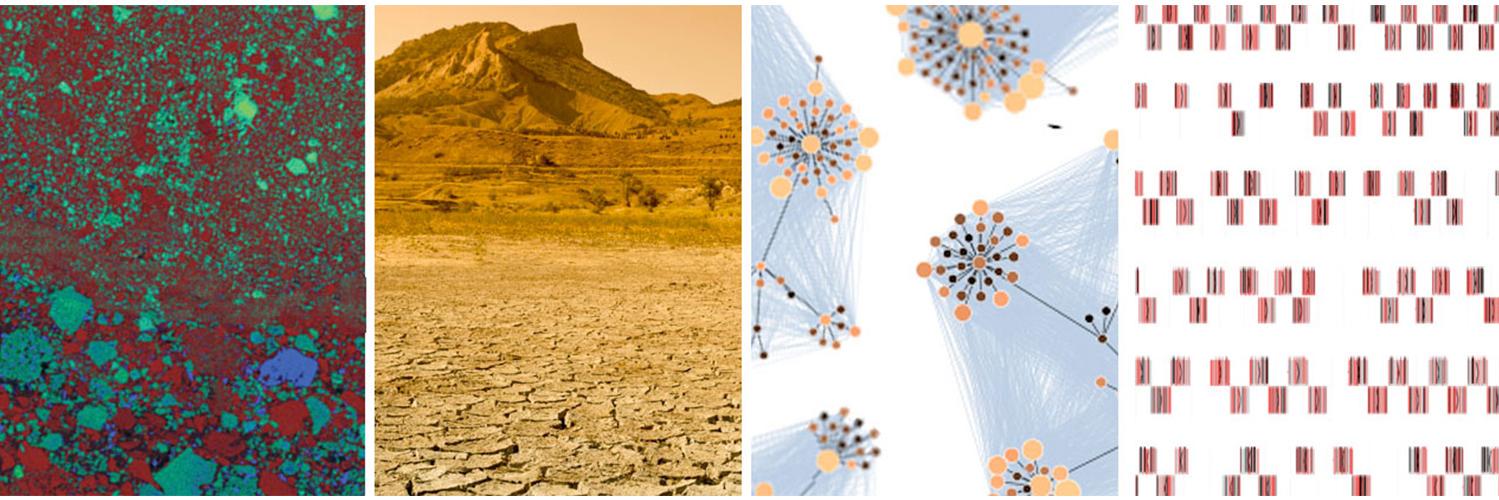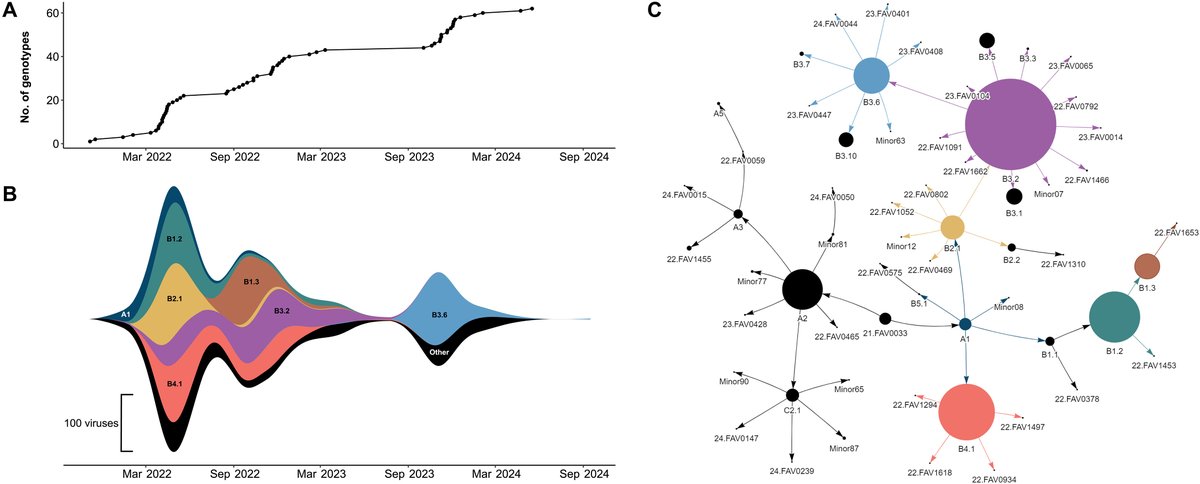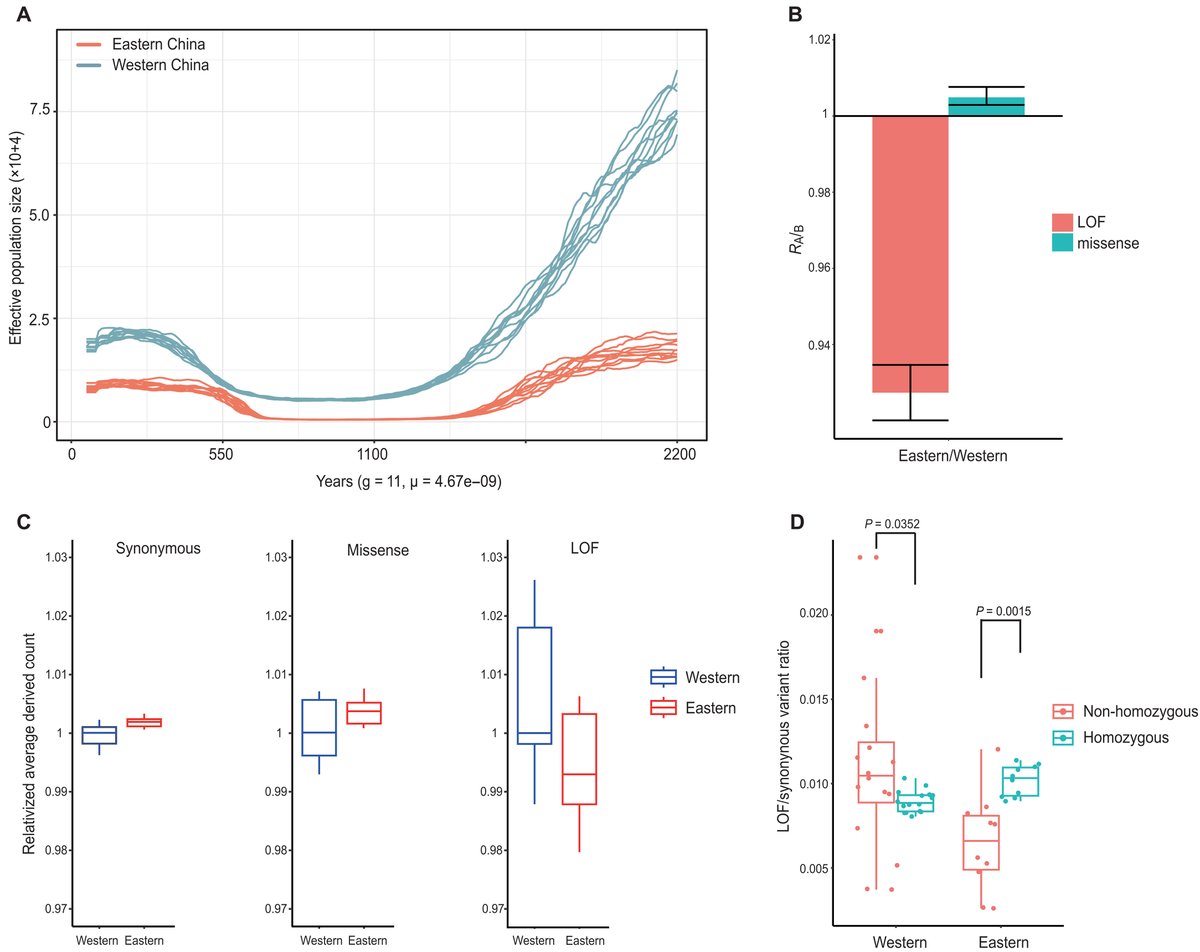
Science Advances
@ScienceAdvances
Science Advances is an open access journal from AAAS that publishes innovative original research across all disciplines of science freely to a global audience.
This week in #ScienceAdvances, a special issue on printed and musculoskeletal robotics highlights a field that draws on progress in biology, materials science, and robotics—with impacts in health care, environmental exploration, and more: scim.ag/4689iTo

A new study pinpoints an emotion-to-motivation gateway that converts painful signals into negative feelings, offering a promising target for non-opioid pain relief. Learn more in this week’s issue of Science Advances: scim.ag/3UraFoY

Sex at birth may not be purely random, according to a new study. Instead, each family’s likelihood of having only male or only female children is a “weighted coin toss” influenced by maternal age and genetics. scim.ag/3Un5Blr

Science Advances is publishing an Erratum for the June 2024 Research Article “Twilight length alters growth and flowering time in Arabidopsis via LHY/CCA1.” scim.ag/4lIFjWQ

A new #AI approach has successfully predicted sepsis diagnoses and mortality for patients in the intensive care unit of a German hospital. scim.ag/4eTGsIx

Robots made of simple modules can mechanically adapt themselves by consuming previously shed components or parts from the environment, allowing the robots to autonomously grow faster, bigger, and more capable. scim.ag/4eY16aG

A new study shows that aphids suppress plant immunity by sequestering the plant immune regulator EDS1 complex into processing bodies. The plant protein Acd28.9 counteracts this strategy as an internal resistance to aphid infestation. scim.ag/4eODwwQ

Porous cranial lesions in the skeletal remains of ancient forager-farmer communities are often hailed as markers for serious diseases such as infant-onset anemia. New findings suggest that these lesions correlate with compromised immune system activity. scim.ag/4kGQwGk

A new study shows that rock fracturing in the deep subsurface of Earth’s crust produces both hydrogen gas and oxidants, driving iron redox cycling and sustaining microbial life in this isolated environment. scim.ag/456WsDN

Protected lands of various types collectively cover only 35% of terrestrial carnivores’ ranges globally, new research finds. scim.ag/4kFyxzW

In new research, scientists map how a subgroup of H5N1 variants diversified and spread during the North American outbreak. scim.ag/4eLrg0o

Postoperative complications are especially dangerous for children, who often struggle to communicate symptoms. A new study finds Fitbit data detected these complications three days before diagnosis. scim.ag/4kxnkkW

Severe climate-related population bottlenecks substantially harm Tibetan macaques’ potential to adapt to and withstand future climate volatility, a new study confirms. scim.ag/44nRjHe

Researchers have found the antidepressant effect of arketamine to be more potent and longer lasting than esketamine in mice and have uncovered the role of microglial BDNF and the mPFC-NAc circuit in enhancing the drug’s effectiveness. scim.ag/4ln7smq

Researchers have developed a biohybrid microrobot based on picoeukaryotes, tiny planktonic organisms, that delivers drugs to the kidney in mice through autonomous navigation and deep tissue penetration. scim.ag/4lknWM9

A new study in mice has identified AGRD1 as an effective drug target for preventing bone loss by administering agonist GL64, providing a potential treatment option for diseases such as osteoporosis. scim.ag/46uL4Tq

Higher levels of prenatal and childhood lead exposure correlated with a higher rate of forgetfulness in 576 children in Mexico, according to new statistical analyses. scim.ag/4lLgI3v

New research examines the flight muscles of fruit flies whose sarcomeres remain largely unchanged during development. Learn more in this week’s issue of Science Advances: scim.ag/40EY98U

Excited to announce that this paper is now out in @ScienceAdvances science.org/doi/10.1126/sc…
What do artificial and biological vision have in common? Shared architectures? Shared task objectives? In this preprint, we suggest a more general explanation: they share universal dimensions of natural image representation.
By studying the properties of dehydrated leaves, researchers have developed an anti-wrinkling strategy that could be applied to artificial surfaces. scim.ag/4kkqAQD
